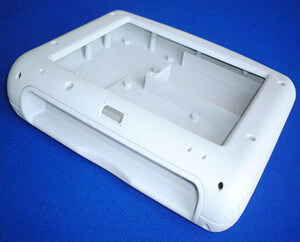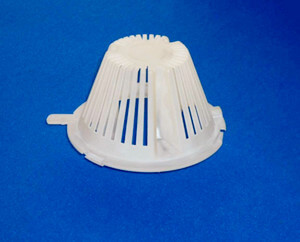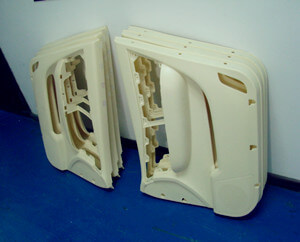RAPID PROTOTYPING
Rapid prototyping services is a hot field today with the 3D printing technology continually development. It will waste too much cost in a whole product development of stage if without prototype testing. So it’s a necessary process in new product development and come into the market. Prototype development is the process of testing your invention to see if it does what it’s intended to do – to expose flaws in your concept work – or to explore alternative solutions to your design. We are able to make CNC prototype machining and SLA prototype and vacuum casting from a range of materials, accurately and cost effectively.
RAPID PROTOTYPES
APPLICATIONS OF RAPID PROTOTYPING
AUTOMOTIVE & MOTORSPORT
Rapid prototyping is essential for producing high-quality auto parts in the auto sector. CNC machines build functioning prototype items rapidly and precisely by following preprogrammed instructions delivered to their internal computers. Lamps, dashboards, handles, knobs, and trim pieces are the parts made using CNC machines. To guarantee their safety, many automotive parts must undergo several tests. Rapid prototyping makes it possible to produce more high-quality vehicle parts in less time.
Services for rapid prototyping are affordable for automakers. They are environmentally beneficial since they employ recyclable materials. Automotive prototypes have also made extensive use of CNC prototyping technology.
The automotive industry may benefit from Rapid Prototyping technology for prototyping and production implementations of the technology. In the latter case, the technique provides the advantage of developing high-quality prototypes that can perform their intended functions. After that, the prototypes go through a testing and validation process before production.
For instance, using Rapid Prototyping with transparent acrylic materials makes rapid Prototyping of lighting components a simple process. In developing new models of cars, Rapid Prototyping can also quickly manufacture high-quality working prototypes, which can then be tested to see how well they operate.→Read More
MEDICAL
Rapid prototype has several applications, including medicine, surgery, prosthetics, and robots.
Currently, the medical and healthcare industries are expanding rapidly, exhibiting innovations in product design, material selection, and rapid prototyping for medical devices and instruments. New approaches for designing and creating medical devices are emerging using advanced rapid prototyping and manufacturing technology. Professionals in the medical field have realized that the most recent developments in medical engineering have facilitated their job by making surgery or therapy more straightforward than ever before.
Early product development significantly influences the product’s usability, budget, quality, and manufacturability. Rapid prototyping approaches facilitate the transition from idea to production for medical devices. Advanced materials and technology have enhanced the likelihood of discovering previously unthinkable answers to medical issues.→Read More
CONSUMER PRODUCT
It is possible to rapidly prototype and produce components made of metal or plastic in today’s world. It is also possible to develop prototypes that are in full color. These methods can be used to create consumer product prototyping quickly.
The ability to illustrate and explain ideas to designers, engineers, and other stakeholders is made much simpler by using an accurate concept model instead of a virtual one. The creation of concept models is made possible via various rapid prototyping and 3D printing processes. It is possible to construct functional prototypes, which include every design element, and make it possible to conduct thorough testing before the production of the final version is planned. All product elements may be evaluated, including how well its components fit together, how well it functions, and how easily they can be manufactured.
When a prototype that works is made available, producers are in a better position to evaluate whether or not they have accomplished the functionality and aesthetic design they envisioned. They can also assess whether or not it is feasible from a financial standpoint to go on with Prototype manufacturing. The method may produce various components, including but not limited to essential pieces made of plastic or metal, computer circuits, and components for electric vehicles.→Read More
DEFENSE
As in other sectors, 3D Printing is gaining ground in defense and military. According to Military I.Q., 75% of industry executives predict 3D Printing will become mainstream in the defense industry within ten years. Additive manufacturing can 3D print replacement components on demand, reduce production costs, and enable novel design engineering in the defense industry.
Today, we’ll look at how the defense industry has embraced 3D Printing and the prospects it offers military sectors as we continue to examine additive manufacturing’s effects on different businesses. We’ll also discuss technology adoption barriers and industrial applicability.
The military industry may benefit from lower tool and component production costs, design flexibility, and localized manufacturing using additive manufacturing. Defense prototyping may also help military systems maintain spare or outdated components.→Read More
AEROSPACE
A significant percentage of the RP industry is devoted to aerospace prototyping. When inventing new ideas, engineers encounter specific obstacles, as do many other professions. They must consider technology limits, lead times, and fabrication costs. Without a troubleshooting step, it could be hard to coordinate all these factors for quick manufacturing.
Rapid prototyping’s progress in the aerospace industry is clear and reassuring. It is very difficult to exceed consumer or industry expectations without aerospace prototyping. To achieve industry needs, aircraft engineers must comply with stringent regulatory restrictions. In the meanwhile, eliminating the RP procedure might imperil certain businesses. They may generate ineffective designs.
For optimum efficiency and safety, the aerospace industry requires superior performance. Consumers, investors, and engineers rely on manufacturing quality to offer peace of mind and conform to industry standards. Nevertheless, specific components are more intricate than others. Without a dynamic design, its incorporation into an existing plan may be problematic.
Prototype making gives designers, developers, and engineers a medium ground. Before approving revisions, they may share ideas and enhance different elements to meet aviation goals.→Read More
YOU MAY ALSO LIKE:
- Rapid Prototyping Promotes More New Product Design Iterations
- Rapid prototyping technology and its application in mold field
- Rapid Prototyping: A Tool for Design, Engineering & Manufacturing
- Several major rapid prototyping and rapid manufacturing technology analysis
- How Do UYEE Provide CNC Rapid Prototyping To Customers
- The 3D Rapid Prototyping Impacts On Automotive Industry
- The Development of Medical Device Rapid Prototyping Technology
- Which Plastic Material Are Used Widely In Rapid Prototyping






